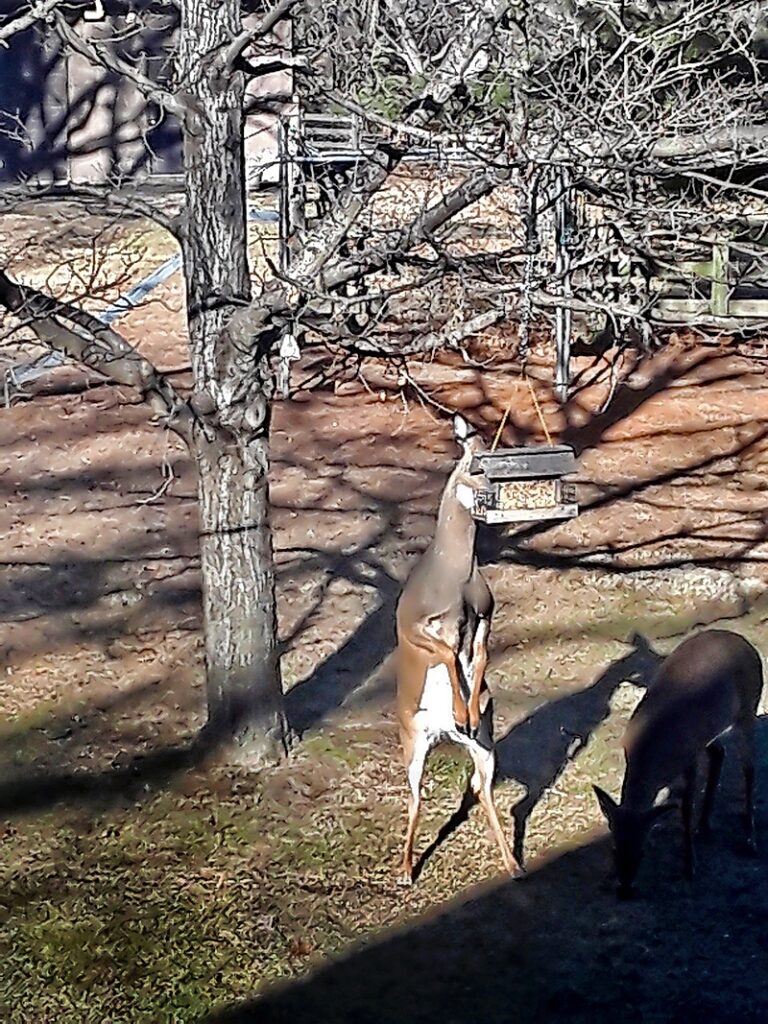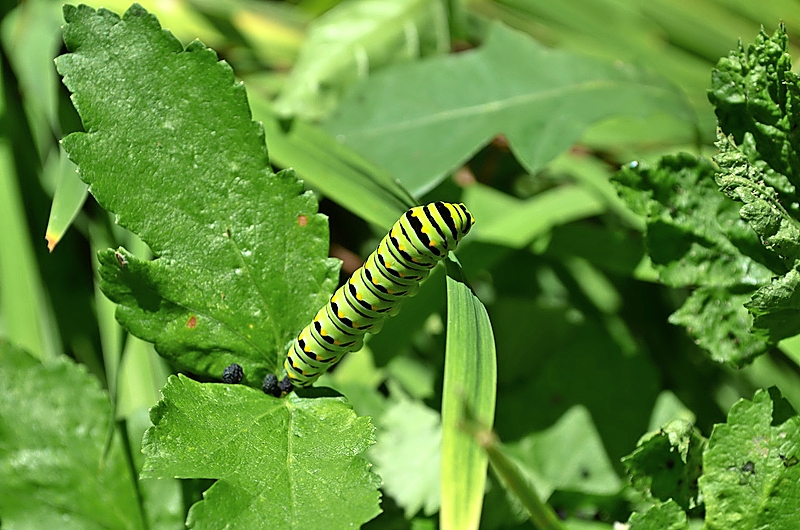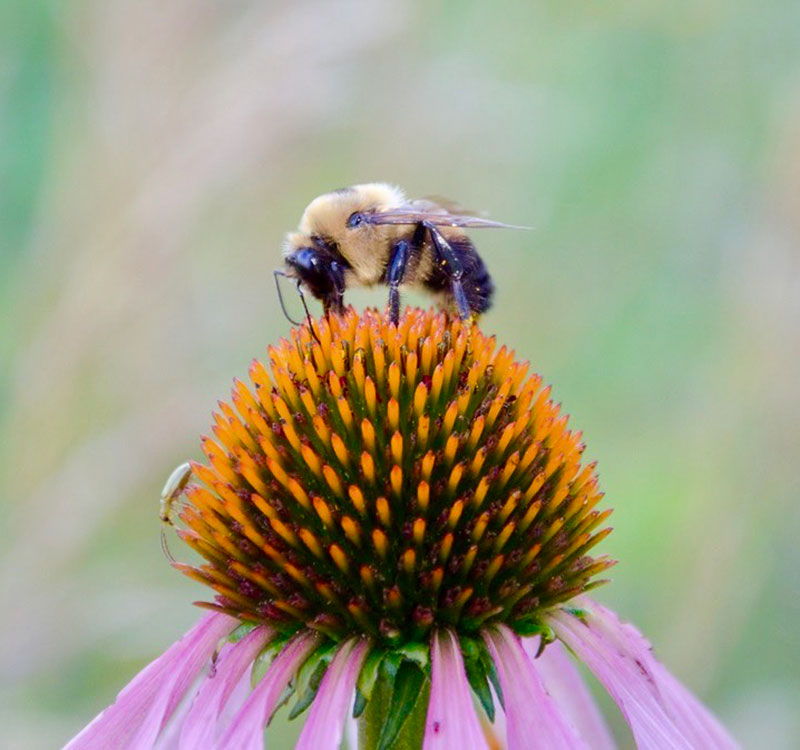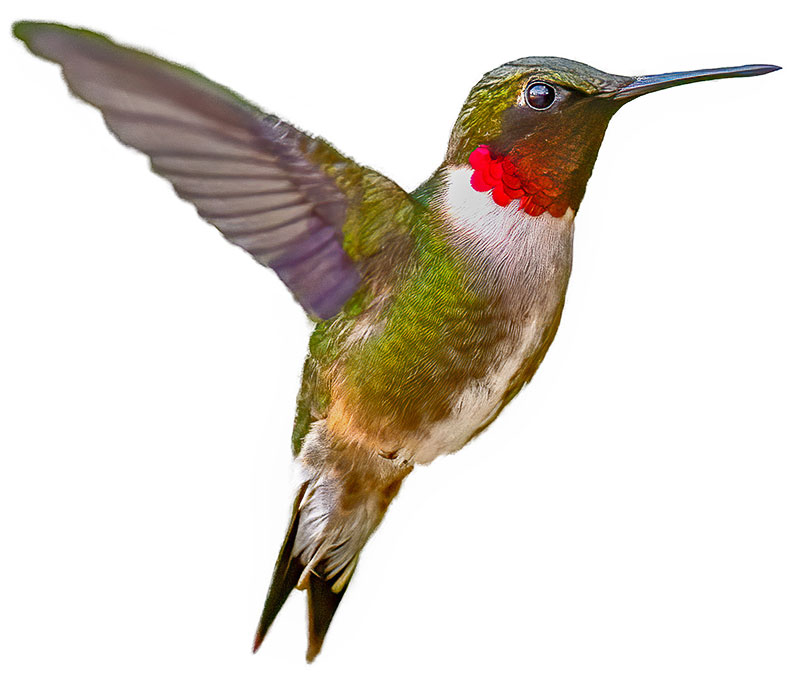Balancing Act
By Naperville Magazine
Appears in the November 2023 issue.
By Kelli Ra Anderson
How to invite wildlife into your yard

For more than 25 years, Johnathan Anderson has seen a variety of wildlife in his backyard in downtown St. Charles—fireflies, bumblebees, hummingbirds, and even nesting owls. And, now, apparently, a groundhog. “At a distance, it first looked like a beaver,” he says. “It was actually kind of neat.”
Such a diverse (and delightful) draw of local fauna to his backyard is no accident: Purposeful use of native coneflowers, prairie phlox, a lush meadow garden, and wild elderberry and violets helps attract and sustain a variety of wildlife. This diversity is key in supporting the life cycles and symbiotic needs of native species, helping make our ecosystems as healthy and as balanced as possible.
However, many of us stick to less-enlightened landscaping practices, relying on lots of mowing, watering, weed killers, and pesticides (all more costly, too). “We operate our yards opposite of nature,” says Gary Swick, president of Friends of the Fox River. “Just look at what nature does. Nature knows best.”
In the spirit of that, here are some natural tactics for enriching your little slice of suburbia, to help become more inviting to more species.

LAYER UP
“The biggest tip is to think of landscape in layers,” says Chris Enroth, horticulture educator with the University of Illinois Extension. “Animals use different layers, which they use during portions of their life cycle.” The more layers, the more habitats for more creatures—and the more opportunities to thrive and reproduce.
• Ground level: Preserve healthy soil microbiomes by avoiding disruptive and destructive herbicides and pesticides.
• Understory: Add native perennials and grasses such as pollinator favorites like asters, bee balms, coneflowers, and goldenrods.
• Midstory: Intersperse native shrubs and shorter trees (like redbuds, cherry, dogwoods, and viburnums) to provide nesting areas and cover from predators.
• Upper story: Provide native canopy trees, which support many species by providing home, food, and larval hosting for all sorts of insects, birds, and mammals.

GO NATIVE
Native plants have home-field advantage. More drought- and disease-tolerant, they require less maintenance (and landscaping bills). “People often think native means just tall prairie grass,” says Peggy Doty, educator and wildlife biologist with the University of Illinois Extension. But options are plentiful, from flowering beauties and green ground cover to towering trees and shrubs with colorful foliage.
You can start your transformation small: Plant natives among commercial plants. Add a container garden with perennials (think: pollinator garden or butterfly way station). Consider designing your front yard for neighbors and your backyard for wildlife. Or just begin with adding one native superhero: the burr oak, which can support a whopping 500 different species.

FOR THE BIRDS—AND MORE
Songbirds eat insects; owls require habitat for their prey. “Support the food chain,” Doty advises. “If you want birds, you need to provide a food chain.” By learning life cycle needs, you can design accordingly. For example, add a tall-grass or a brush-pile sanctuary to support toads, turtles, salamanders, birds, and small mammals. Plant native flowers with high nectar levels to attract pollinators. Put out bird feeders with high-quality seed. Add a pond or a birdbath to provide a crucial water source for insects and animals alike. If you provide it, they will come.
Photos: Chris Enroth; iStock (ruby-throated hummingbird)


